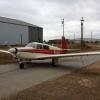Another touch and go incident
-
Members Online
- rathomas22
- Echo
- Greg_D
- ProtoFly
- Sabremech
- MDMooney
- mike_elliott
- Skyland
- skydvrboy
- Crawfish
- Marc_B
- PT20J
- skipswift
- src223
- TangoTango
- Rick Junkin
- chrisburdzy98
- FlyWithRas
- TheAv8r
- 65MooneyPilot
- Marcopolo
- TCC
- haymak3r
- eman1200
- LOCOLJ
- DXB
- georgewdean1020
- catchman86
- Brandt
- MikeOH
- caractacuspdoom
- daytonabch04
- Peter T
- LANCECASPER
- Fly Boomer
- rakesb


Recommended Posts